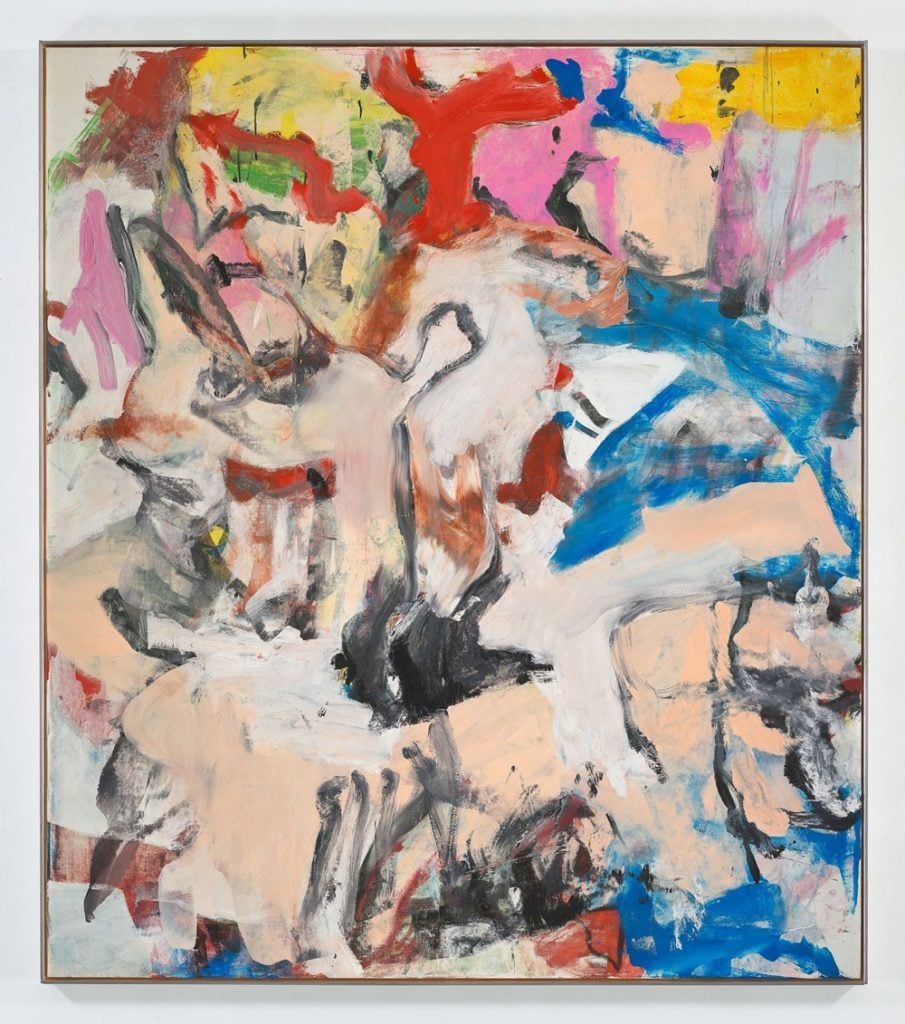Art Fairs
Lévy Gorvy Sells Microsoft Billionaire’s de Kooning for $35 Million as Art Basel Hong Kong Opens
The gallery's gamble that Paul Allen's painting would generate interest in Asia has paid dividends.

The gallery's gamble that Paul Allen's painting would generate interest in Asia has paid dividends.

Eileen Kinsella

Less than two hours into the VIP preview of Art Basel in Hong Kong, power dealer Lévy Gorvy announced the sale of its star work at the booth—a Willem de Kooning abstract painting from 1975 with an asking price of $35 million. Adding even more luster to the appeal of the work is the prestigious owner, Microsoft co-founder and billionaire collector Paul Allen, who asked Lévy Gorvy to sell it for him.
The rapid sale of what is hands down one of the most expensive works at the fair, confirms what dealers and auction houses have been betting on—growing ranks of wealthy buyers from all over the region who are determined to score blue-chip masterpieces and who are not afraid to spend seven- and eight-figure sums for the best work.
The gallery declined to say who or what nationality the buyer is, except to specify that the work is going into a private collection. But gallery partner Brett Gorvy said that the gallery had Asian collectors in mind when it decided to present the work in Hong Kong.
Gorvy told artnet News immediately after the sale that the gallery tailored its presentation to the specific fair audience in question. “One of the things that I always saw at Christie’s is that you have this area of people who are above the $20 million mark,” he said. “It’s a small group but they’re very passionate and knowledgeable and they want the best of the best.”
Gorvy revealed that when Allen decided to sell the painting the gallery strategized about the best way to sell it, including a possible private sale. But since Allen was willing to put his name behind the painting, they decided to bring it to a major art fair. After considering the Swiss edition of Art Basel, Lévy Gorvy ultimately decided on Hong Kong.
“We had done a show last year of de Kooning and Zao Wou-ki, and there was a very good response from Asia to de Kooning,” Gorvy said. The Dutch-American artist’s “gestural painting obviously has a close connection here to calligraphic artists,” he added.
Another compelling reason to bring de Kooning’s work to Hong Kong is the number of the top-priced de Koonings sold by Christie’s to Asian buyers during Gorvy’s tenure there as co-head of the postwar and contemporary art department.
“Asia for us is not just Chinese or Taiwanese, it’s also Malaysian, Japanese…a cross section of buyers,” Gorvy said.
Price was also important. There are a number of comparable auctions and private sales for de Kooning works that would give a buyer confidence that the $35 million asking price is realistic, he said. “It’s slightly below where you would normally see a painting like this make in a highly competitive situation at auction.”
The gallery sent out a brochure to individual clients roughly two weeks before the fair. The understanding was that everything shown had to be available on the day of the fair. Interested buyers could place a hold on the work, but only for an hour.
The 1970s is considered to be one of the best periods of de Kooning’s life and work. Of the 20 paintings he created that year, 11 of them are in museums, Gorvy noted. “This is certainly better than the nine other paintings that are out there.”
But de Kooning wasn’t the only star in the booth. Also within hours of the opening, the gallery announced the sale of four paintings by Pat Steir, whose star has been on the rise since Dominique Lévy began representing her just over two years ago. Her work, from a new series titled “For Hong Kong,” inspired by Chinese poetry and culture, clearly struck a chord with buyers. All had an asking price in the region of $500,000 and were bought by private collectors and foundations in Asia.